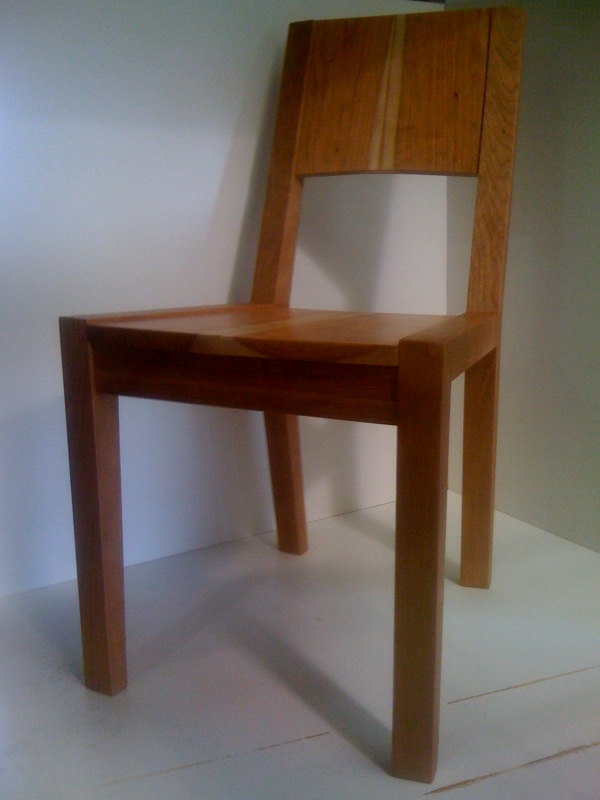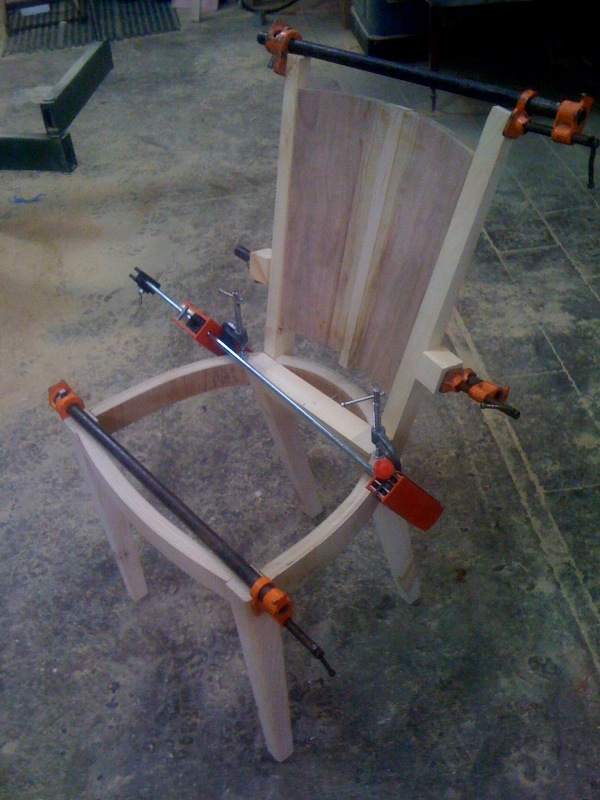Question
I really like modern design. I went to college for furniture design, but have been primarily building cabinets for the last 17 years. I was looking at a very popular furniture companyís web site and called to get pricing on some of their tables and chairs. I was shocked at how much they were. Chairs ranged from $640.00 to $935.00. Tables ranged from $2500.00 to $4000.00. The table and six chair set that I liked would cost me almost $8000.00! I had a slow day, so I built a prototype chair similar in design but different. I figured if I built twenty of these chairs my cost for material/fabrication/finishing/and overhead would be around $150.00 per chair. With a retail mark up of 100% that would be $300.00 per chair. Still a pricey chair, but 1/2 of the popular furniture company that is making a lot more units.
So, I guess my question has a few parts. Do any of you build small run furniture projects (like chairs or tables)? If so what is your cost per unit and what is the retail mark up? How could I best market a product similar to others for half the cost? Or better yet, how could I market similar products for the same price?
At this point I am looking at building around 20 plus chairs. My thought is that if I were building 100 plus pieces my cost would go down around 28% on fab time and 7% on materials.
Forum Responses
(Business and Management Forum)
From contributor Y:
The table and chair prices you quoted were possibly full retail, but they likely sell far more at a heavily reduced trade price to designers. I think you may be underestimating the time it will take to completely build and finish twenty chairs relative to the prototype you've built. On the few occasions when I've made multiples of something I made one-of previously, I expected some grand economy of scale to magically appear. But I found there were only small gains, mainly in the initial steps of fabrication - cutting and machining parts. In a small studio furniture shop setting (one or two skilled workers) there is virtually no gain in assembly processes and perhaps modest gains in finishing.
Producing multiples also introduces unexpected labor and logistical issues, like moving/storing multiple parts and assembled items in the shop, dealing with the boredom of repetition, shipping, etc. The threshold for significant gains in economy has more to do with the means of production (lower skilled labor in a factory vs. higher skilled labor in a shop) than the number produced. Then there's the market for chairs in the $300 range - very, very small considering all the available product from china in the $50-$100 range.
They may have a large, national or international workforce of representatives, who spend their time visiting architects and designers offices to keep the industry up to date on their offerings. They may have the capacity to fill a huge office building with workstations, reception areas, waiting room furniture, conference tables, file cabinets, etc. They are probably getting/making these pieces for far less than 25% of the listed price.
Good chairs are expensive and people will pay for quality. Restaurants, for one, do not want to constantly replace cheap chairs, so they will gladly spend $400-$700 per chair or stool. It really hinges on your design and ability to market it. Just because you love it, it doesn't mean anyone else will.
It gets really complicated on pricing, though. How do you want to sell it? If you sell direct, then price it as you wish, but expect limited sales. Most will figure out what their minimum price is, then give it a list price two times higher or more so they can sell it wholesale to retail stores.
There's also the designers discount, which is generally 30-50% to the trade (some of the larger retail stores do a smaller trade discount of about 10-15%). Some decorators will not consider your products unless they get at least 30% off list. Interior designers spending someone elseís money are the other likely purchasers of $800 chairs, so be nice to them.
Basically, build a set of four and see what your real costs are. Package them and price them for shipping across the country. Take that total price and mark it up 60% (divide that number by .4) and that's a good starting point for a list price.
I am not a mass manufacturer so donít think that you can get a chair for 150$ by me because thatís not what I do (this goes for all my furniture even the P lam stuff). I manufacture to a customerís specific needs, custom size, custom design, also means custom price. Small shops just canít compete in the mass manufacturing game.
In my solo shop now, I wouldn't build a chair for less than $800-and that would be a simple chair-cut and shaped parts, m and t joinery, and a slip seat. If you wanted bent laminations, rolled shaped parts etc it would be a lot more. You'd be spending half of that $150 on material wouldn't you?
A funny side note. I was building some furniture for a local shop that was behind schedule on a large project and told them about my chair project. They said they just had a request for ten chairs that were priced at $900 a chair but were too busy to meet the delivery date. I said "let me take a look at it."
Below is an image of the prototype I built off of a 1.5" X 2" pic provided to me. This chair took me 12 hours to design/build to the point you see it at. At $50-$80 hrly shop rate that is $600-$960. All the fixtures for fabrication are made and I am excited to see how long it will take me to fabricate a few for myself, if I get the time.
I am currently looking to outsource the curved solid back for the second chair. I can do veneer/vacuum but would prefer having a solid back (like a radiused slab door).

Below is the other chair. I forgot to mention that I used the seat from one of the first chair prototypes for the back for this one. I had to make it wider and re-cut sides.
